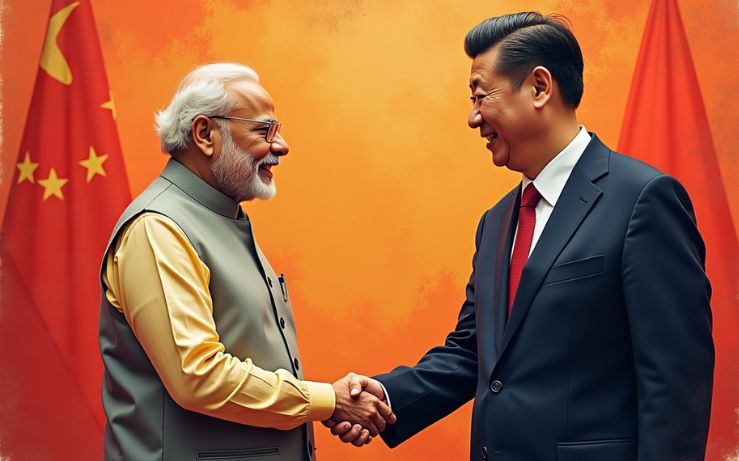In the glittering port city of Tianjin, against the backdrop of a grand international summit overshadowed by the long shadow of American trade wars, a stunning and historic reversal has taken place.
After years of simmering hostility, a bloody border dispute, and deep-seated mistrust, the leaders of the world’s two most populous nations, China and India, have publicly declared a new era of partnership, a calculated diplomatic pivot forged in a shared defiance of Washington.
The landmark meeting between Chinese President Xi Jinping and Indian Prime Minister Narendra Modi, on the sidelines of the Shanghai Co-operation Organisation (SCO) summit, was Modi’s first visit to China in seven years.
The symbolism was as powerful as the substance.
From Himalayan peaks to a handshake of peace
This was not a meeting of old friends, but of recent adversaries. The relationship had been in a deep freeze since 2020, when deadly clashes between their troops erupted on their shared Himalayan border, leading to the suspension of all direct flights.
Now, in a dramatic thaw, Modi announced that those flights would resume.
The language used by both leaders signaled a fundamental reset. Xi told his Indian counterpart that China and India should be “partners, not rivals,” urging him to approach the relationship from a “strategic height and long-term perspective.”
Modi, in turn, declared that there was now an “atmosphere of peace and stability” between the two giants.
The shadow of the west: a common grievance
This sudden embrace is not happening in a vacuum. The architect of this unlikely reconciliation is, ironically, US President Donald Trump.
His administration’s decision to impose steep tariffs on Indian goods as punishment for New Delhi’s continued purchase of Russian oil has fundamentally altered India’s strategic calculus.
With its relationship with Washington facing increasing headwinds, India is actively seeking new and powerful allies.
The presence of Russian President Vladimir Putin at the same summit underscored this shifting dynamic.
The SCO, a security bloc created by China and Russia as a direct countermeasure to Western alliances like NATO, provided the perfect stage for these leaders to air their common grievances and project a united front.
A city transformed: the spectacle of the summit
While the summit itself is largely symbolic, for the host city of Tianjin, it has been a monumental event.
Banners and billboards celebrating the gathering adorn the city, and at night, massive lightshows have transformed the downtown skyline, with tens of thousands of spectators cramming into the riverside area to witness the spectacle.
The city of more than 13 million has been brought to a near standstill, with roadblocks for visiting motorcades and the suspension of taxi services.
Yet, this has not dampened the enthusiasm of crowds eager to be part of what has been described as a historic meeting.
It is a potent visual for a summit designed to showcase a powerful, non-Western alternative on the world stage, a new center of gravity in a rapidly changing world.
The post ‘Partners, not rivals’: As Trump’s tariffs bite, India’s Modi and China’s Xi reset ties appeared first on Invezz

